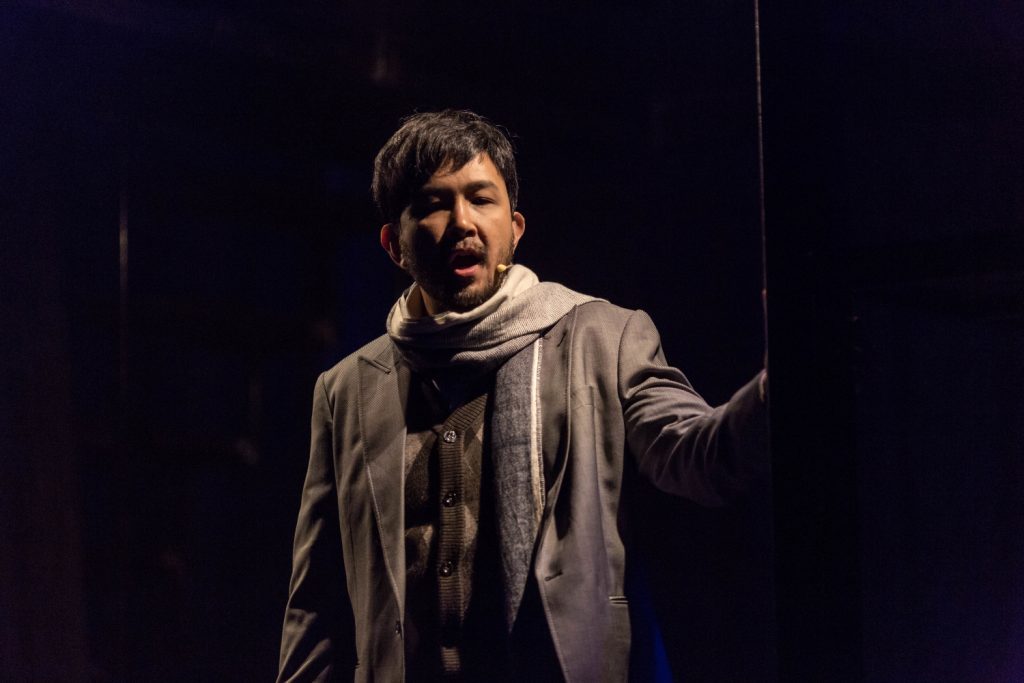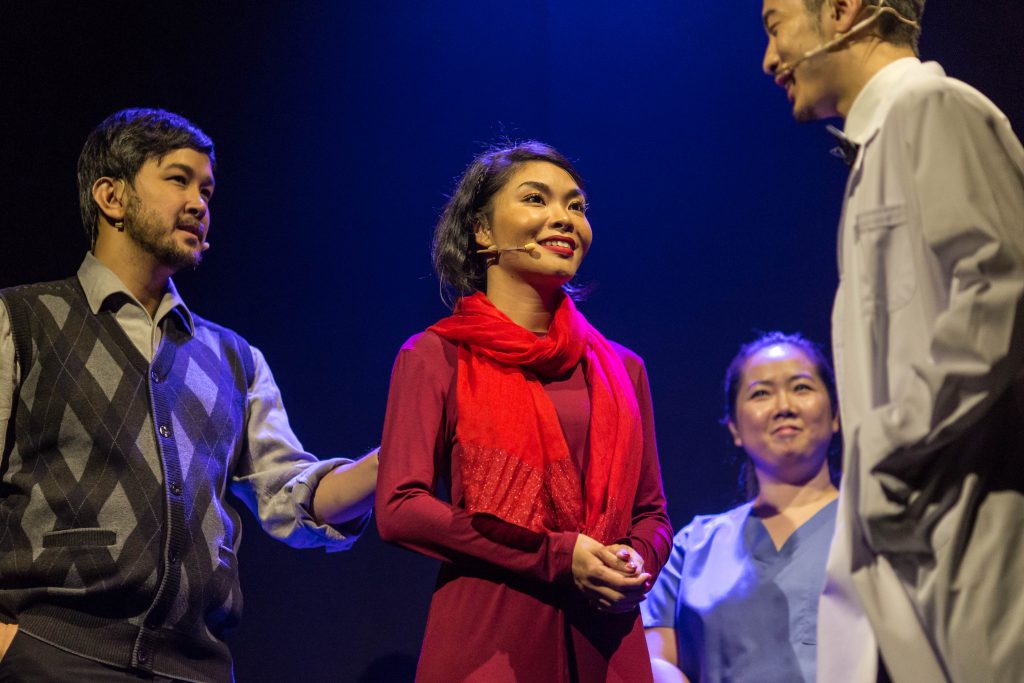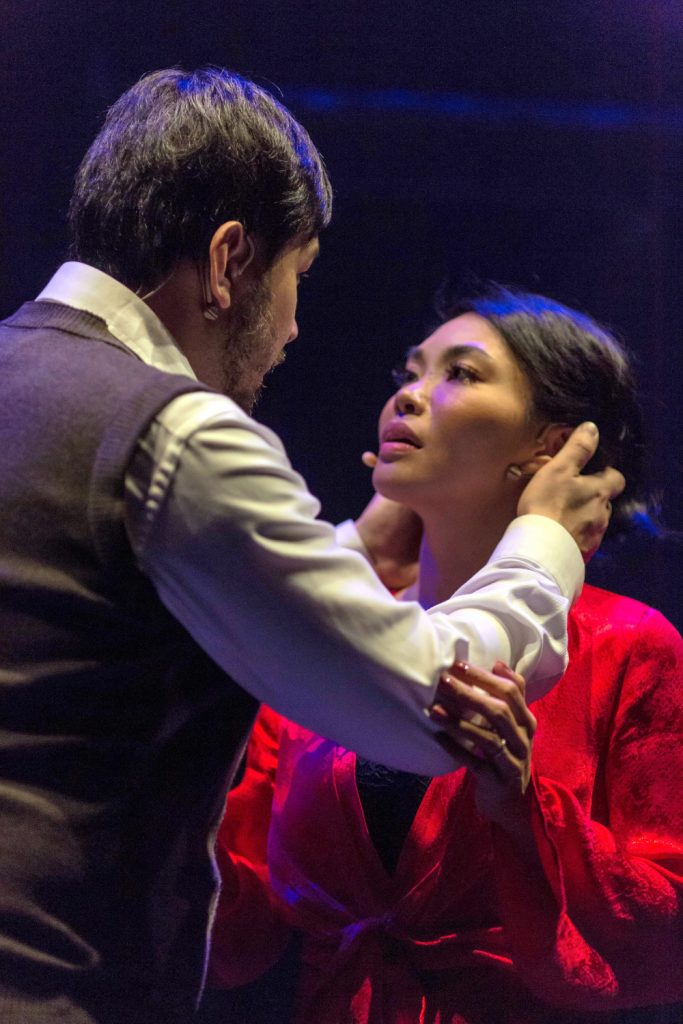- Views2082
- Likes0
Next to Normal
By PAN Productions
12 – 21 July 2019
Damansara Performing Arts Centre
REVIEW BY TICKET TIGER
Next to Normal, a contemporary rock musical, created waves when it opened on Broadway in 2009. It garnered critical acclaim which included 11 Tony nominations, 3 Tony wins, and a Pulitzer Prize for Drama – an accolade rarely bestowed upon musicals.
Its recent Malaysian premier by PAN Productions, led by veteran director Nell Ng, proves that a decade after its debut, its accurate, thought-provoking and ultimately compassionate exploration of mental illness has lost none of its urgency or poignancy.
The musical is set in the nondescript suburban home of the Goodmans – the “perfect adoring family” as Diana (Nikki Palikat) sings in her opening number. Her architect husband Dan (Peter Ong) is reliable but dull, her son Gabe (Christian Palencia) is rebellious and her daughter Natalie (Mae Elliessa) is an antsy and uptight overachiever. They seem a garden variety middle-class family. What is not typical, however, is that Diana suffers from bipolar disorder – a condition which through the years constantly teeters her on the brink of disaster. It is Diana’s struggle with her condition and the strain it takes on her family that drives the plot and music of Next to Normal.
Diana’s condition is unpredictable – for long stretches her treatments keep her stable but just when all seems well, a chasm opens which ruins whatever headway her doctors (both played by Vale Wong) have managed to gain. Her regular visits to the psychiatric ward take her through a host of treatments from medication to psychotherapy to hypnosis to electroconvulsive therapy.
After a meltdown early in the musical, Dan takes Diana on one such visit and sings while waiting for her to be treated, “Who’s crazy, the one who can’t cope? Or maybe, the one who’ll still hope?” As the Goodmans go through a seemingly endless cycle of ups and downs, the line between who’s not coping and who’s still hoping constantly shifts. Diana and her family play a protracted game of musical chairs as they take turns to be either hopeful or despairing.
Diana is at times self-aware and determined in facing her illness—she is so familiar with her long list of pills she can sing about her favourites. She acknowledges her reliance not only on medication and therapy but her family for support. Yet at other times, she lashes out in frustration, claiming that her family can barely comprehend (let alone empathise with) her more extreme symptoms—hallucinations, suicidal tendencies and manic depression.
She is a helpless and accepting patient at times, headstrong rebel and argumentative wife at others; she is both victim and inadvertent oppressor. It’s a meaty and complex role which Nikki Palikat relishes from beginning to end. She moves through both the emotional and musical range of the character with panache, and her incomparable voice retains confidence and control even when the character loses hers.
Mae Elliessa as Natalie was a pleasant surprise. Always living in the shadow of her mother and older brother, Natalie is not only embittered that her mother’s illness makes Diana distant, she also realises that it shapes so many of her own fears, insecurities and anxieties. Natalie is drawn to love interest Henry (the eternally youthful Joshua Gui) but is deeply reluctant for him to face the family baggage she carries. She resents her mother as much as she craves her love. With a clear voice and impressive emotional range to her acting, you’d never tell that Mae is a relative newcomer. Diana and Natalie’s duet of the title song about the truth of their fraught relationship packed an emotional punch that left half the audience audibly crying.
While the main female roles in Next to Normal were a pleasure to watch, the leading men didn’t fare so well.
Musical theater stalwart Peter Ong drew a lot of sympathy as longsuffering husband Dan. While Ong’s singing prowess could not be faulted, I couldn’t help but feel he missed the rich opportunities to express the more difficult aspects of Dan’s character like exasperation and anger at his wife and her condition.
About a third of the way into the musical, we find out that Gabriel Goodman died as an infant, and the son Christian Palencia plays is actually Diana’s hallucination. Palencia, a singer-songwriter, has a tender, beautiful voice that shone through the quieter songs; he also has a physicality of movement suited to the role. Unfortunately, when the amplitude of the music was turned up for the rock numbers, his voice was often drowned out by the band or the ensemble.
The set was a multilevel black steel frame with sections representing different rooms and locations. Designed by Melissa Teoh, it echoed her earlier design for the recent Gold Rain & Hailstones revival at the same venue. However, this musical’s darker lighting (by Ee Chee Wei) and lack of props lent the musical a much darker tone. The bareness of the stage also highlighted Nell Ng’s inventive directorial flourishes (giant psychedelic pills and flags carried by stagehands to represent medicine and mental states, respectively), but I wasn’t entirely convinced that they all enhanced the storytelling.
Next to Normal’s music stays within rock musical conventions established by composers like Jonathan Larson (Rent), Sheik & Sater (Spring Awakening) and Trask & Mitchell (Hedwig & The Angry Inch). Songs shift seamlessly between heavy riff-driven rock numbers to quieter piano and violin ballads. Music in this staging was directed by Dennis Law, and while the band was competent, I felt at times the sound was overpowering and imbalanced with the actors’ voices.
While not musically inventive, the play’s impact arises when the lyrics are fused with the music to explore the inner tumult in the Goodmans’ psyches. I could see why its daring subject matter was considered groundbreaking, especially ten years ago. It is particularly timely to have it staged locally, where there is still rife stigma and misunderstanding surrounding mental health (and mental illnesses in particular). Next to Normal demystifies its subject matter – portraying it accurately without sentimentality but with compassion. In doing so it fosters empathy from a point of understanding, not pity or fear.
The Goodmans try their best to support and sympathise with Diana, holding out hope even when she runs out of it. It’s soon obvious, though, that Dan and Natalie need a lot of support and sympathy themselves. Every time Diana spins out of control, they inevitably get reeled in, too, and any semblance of normalcy is threatened by the spectre of regression.
Diana’s illness casts a dark net far beyond her own mind, into Dan and Natalie’s too. They struggle to relate to her, to each other and to themselves. Next to Normal casts that shadow unto its audience’s minds too, as we learn the high price paid by not only patients but all who love them.
All images by Jimmy Ang, courtesy of PAN Productions.
Ticket Tiger is a performing arts enthusiast roaming KL and its surrounding environs. He likes to chew on meaty productions and isn’t afraid to bite.

